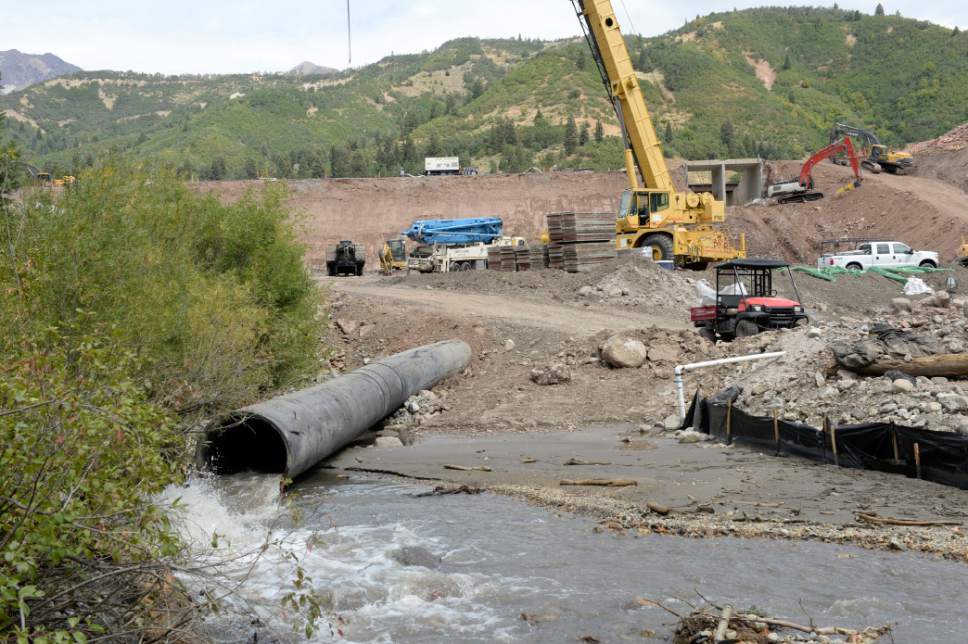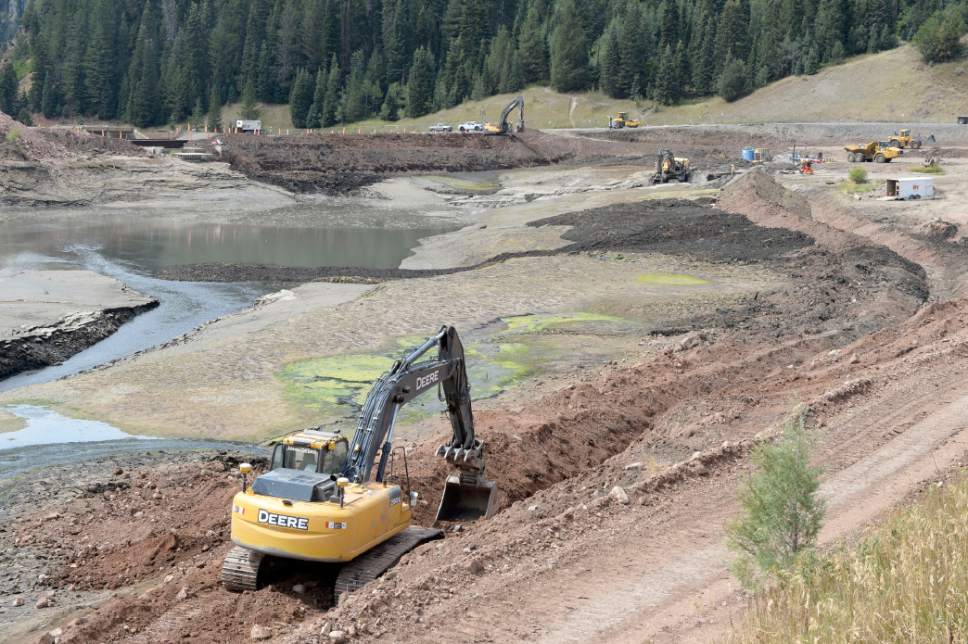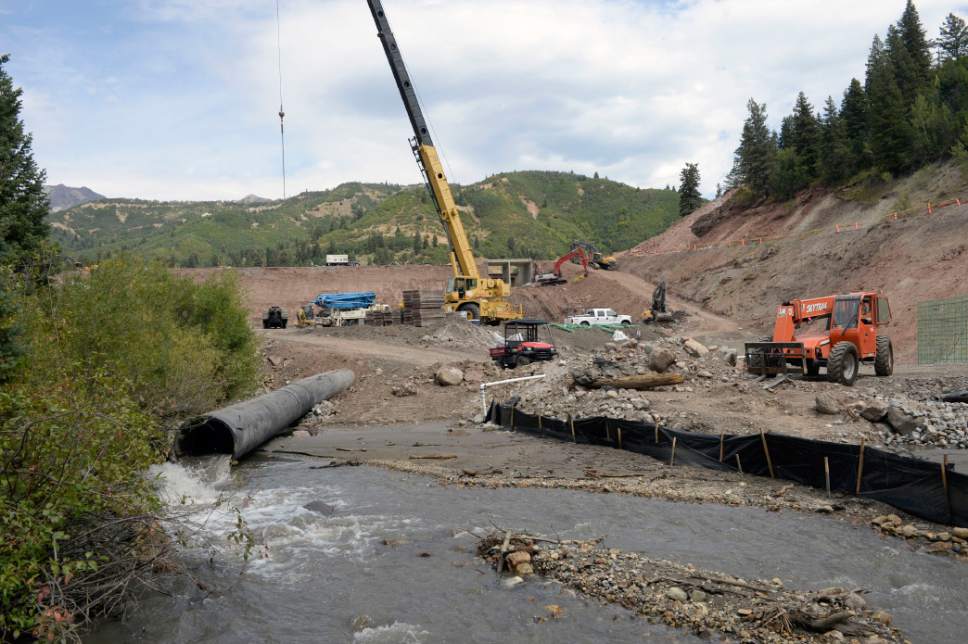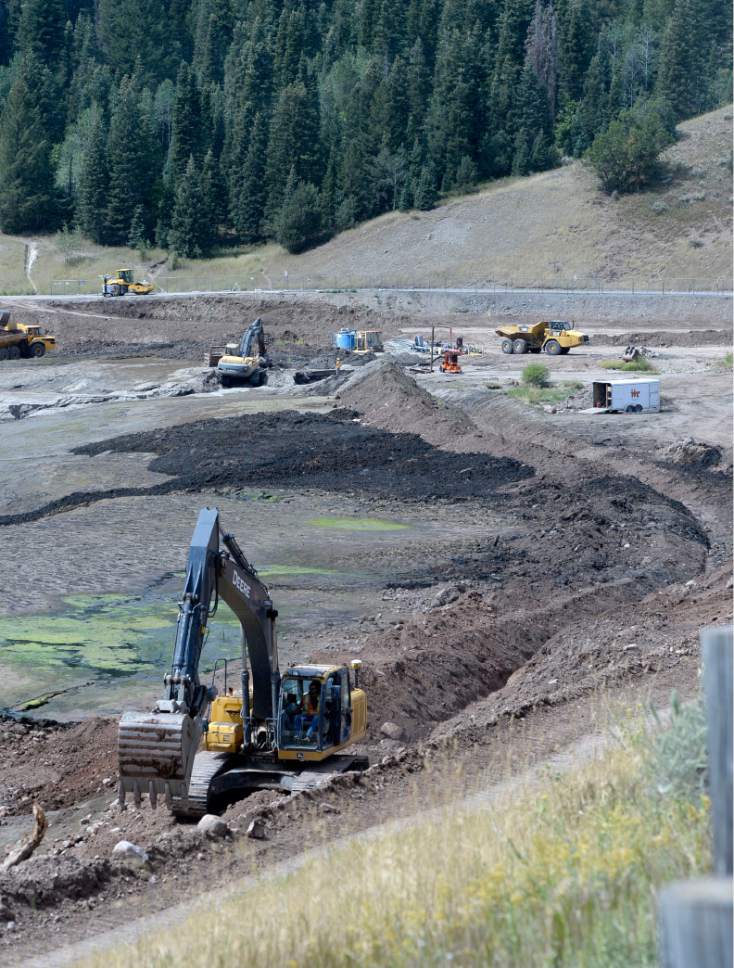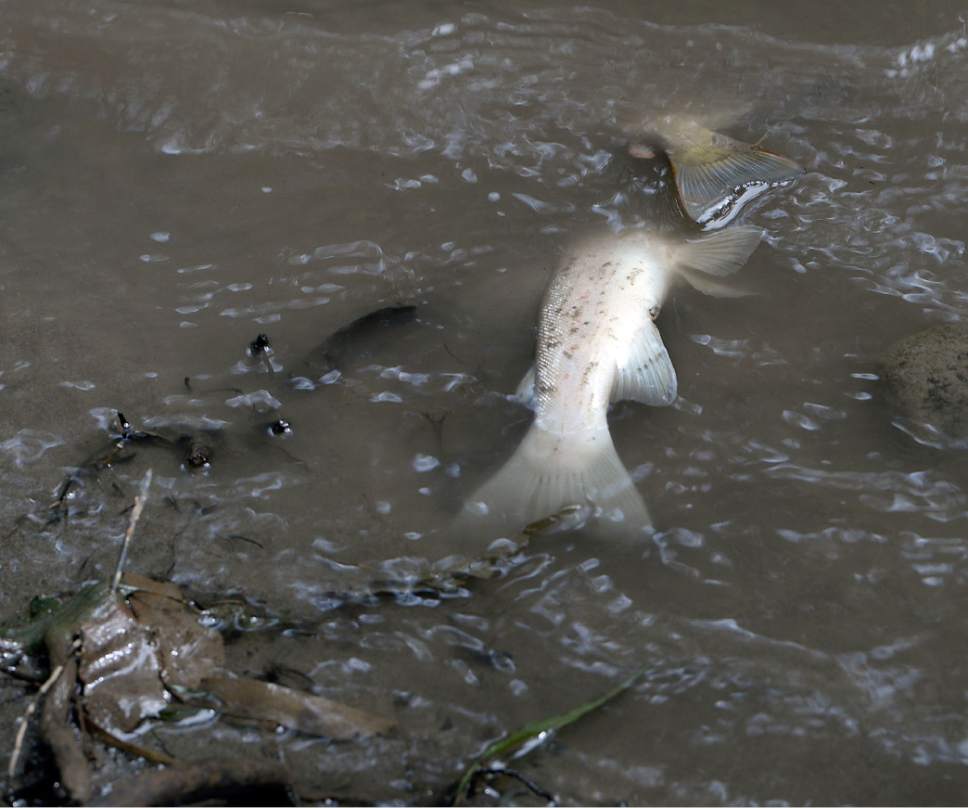This is an archived article that was published on sltrib.com in 2016, and information in the article may be outdated. It is provided only for personal research purposes and may not be reprinted.
Water and sediment samples taken from American Fork Canyon show its river has been fouled with lead and other heavy metals thanks to a major sediment spill last week during a dam rehabilitation project, according to a report released Friday by the Utah Department of Environmental Quality.
Levels of cadmium, zinc, lead, copper, nickel and arsenic in the river sediments exceed health standards for aquatic life, according to test results. And while metal concentrations in the water were up to 10 times higher below the reservoir than above it, they were not high enough to exceed human health standards for recreational exposure.
But the water had cleared somewhat by the time DEQ collected water and sediment samples Tuesday, so the results may not represent the worst of conditions associated with the spill, which peaked Sunday or Monday.
The releases of sediments laden with toxic mine runoff from Tibble Fork Reservoir are not expected to end until Saturday at the earliest, when a bypass channel will be completed to divert the river around the contaminated lake bed. The spill turned the water river's north fork into black pudding, according to one account, and deposited muck well above the water line.
On Friday, nearly a week after the spill, the Utah County Health Department said it would post "caution" signs along the river, advising the pubic against wading and walking along the banks to avoid "potentially toxic" sediments. Those who experience exposure, or come into contact with the riverbank sediment, should wash the sediment from all skin, clothing and equipment to avoid contaminating automobiles or homes.
The North Utah County Water Conservancy District, which is upgrading the 50-year-old Tibble Fork Dam, triggered the sediment spill by opening the dam's gates last weekend. The reservoir needed to be drained as part of an effort to raise the dam's crest by 15 feet, but the project was not supposed to discharge sediments, according to an environmental assessment completed last year.
Conservationists fear the river is now stuck with the toxic metals, which concentrate in the tissues of living organisms, especially higher in the food chain. This river, coursing through a scenic Wasatch canyon, is one of Utah's most heavily fished waters and the state stocks trout here by the thousands.
"Now that there are heavy metals in the sediments, it is a long-term situation for us to deal with," said Paul Burnett, a program director for Trout Unlimited. "Heavy metals can have a direct effect on the macro-invertebrate community. That's the food source for the fish."
The spill, first noticed Sunday, killed all fish in the river's north fork for a distance of 2 miles. Below the confluence with the south fork, some fish survived and survival rates appeared to improve farther downstream, according to the Division of Wildlife Resource.
DWR continues to urge anglers to practice "catch and release," since it remains unknown whether it is safe to consume the river's fish. Biologists collected live fish from the creeks and are analyzing their tissue for the presence of metals.
Metal concentrations in the river sediments above the reservoir also exceeded standards for aquatic life. These findings offer evidence of the need to address discharges from abandoned silver and gold mines that perforate the canyon's headwaters.
"Tibble Fork is an example of the ticking time bombs we have in our watersheds in the West," Burnett said. "In Utah we don't have the acid mine challenges, but these are a major threats to our cold water streams."
Utah Rep. Jason Chaffetz visited the reservoir Friday as crews were digging a channel and laying pipe around the drained lake.
"They appear to be on pathway to recovery," he said. "Clearly it was not an optimal situation. We want to make sure the feds that are involved are engaging with the state agencies."
Brian Maffly covers public lands for The Salt Lake Tribune. Maffly can be reached at bmaffly@sltrib.com or 801-257-8713. Twitter: @brianmaffly



